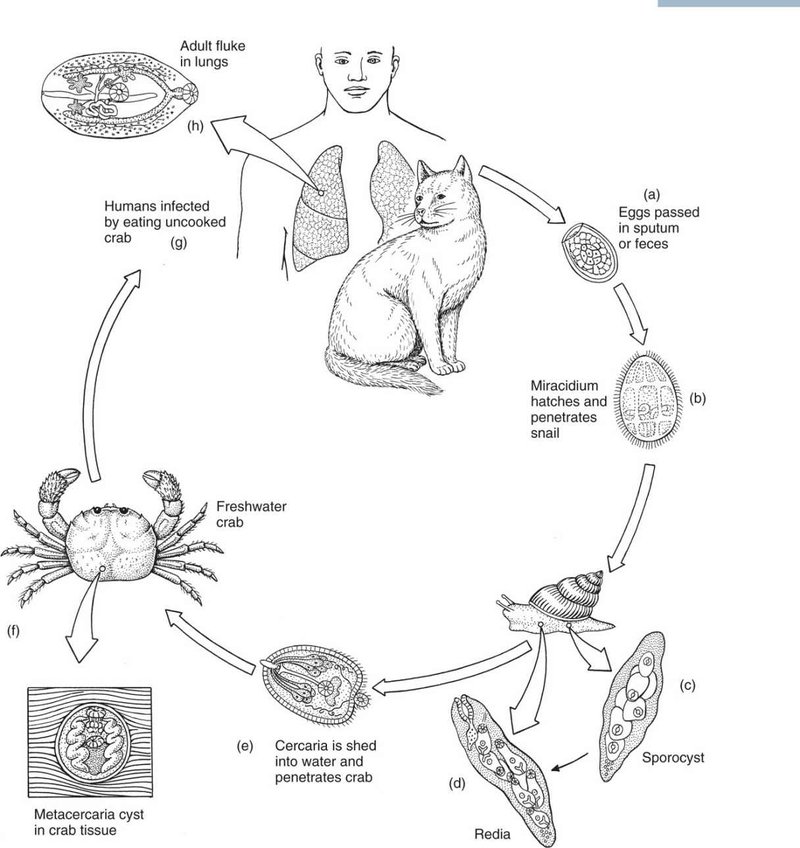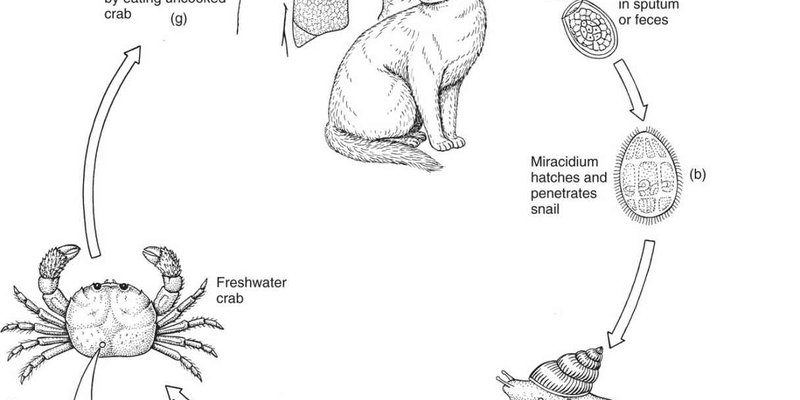
Trematodes belong to a group of parasitic flatworms that primarily infect the livers, lungs, or blood of different organisms, including humans. They’re like the ultimate survivalists, adept at navigating through various life stages to ensure their continuation. Understanding their life cycle not only helps us appreciate their tenacity but also sheds light on the health implications for both wildlife and humans. Ready to dig deeper? Let’s break down the stages of these remarkable organisms.
What Are Trematodes?
Trematodes are flatworms belonging to the class Trematoda. They typically have a flat, leaf-like shape, which helps them cling to their hosts. Often, they have specialized mouthparts that allow them to feed on the tissues, blood, or fluids of their hosts. Picture them as tiny hitchhikers, using their unique adaptations to get by in a world where they rely on other living beings for survival.
There are hundreds of species of trematodes, with some being more infamous than others. For example, the liver fluke (*Fasciola hepatica*) infects livestock and can cause significant economic losses in farming. Meanwhile, species like the blood fluke (*Schistosoma*) can infect humans, leading to serious health issues, including schistosomiasis. It’s a reminder of nature’s complex relationships, where some creatures thrive at the expense of others.
The Life Cycle of Trematodes
The life cycle of trematodes is fascinating and involves multiple stages, typically requiring at least two different hosts. Here’s how it usually works:
1. Eggs in Water: The cycle begins when adult trematodes release their eggs into the water, often through the feces of an infected host. These eggs hatch into larvae, called miracidia, which are free-swimming and seek out their first intermediate host—commonly a snail.
2. Larval Stages: Once a miracidium finds a suitable snail, it enters and transforms into another larval form called a sporocyst. This stage can produce hundreds or thousands of new larvae, called rediae. Eventually, rediae develop into cercariae, which are released back into the water.
3. Cercariae Stage: The cercariae, equipped with tails, swim around in search of a second host—typically a fish, mammal, or even humans. Once they find one, they penetrate the host’s skin or are consumed by them, transitioning into another stage called metacercariae.
4. Final Host: When metacercariae are eaten by the definitive host (like a mammal or human), they develop into adult trematodes. Here, they mate and produce eggs, completing the cycle.
This multi-host approach ensures that trematodes can thrive in various environments and reach their ultimate reproductive potential. It’s like they have multiple pathways to success, making it tough for humans and other animals to eradicate them!
Behavior of Trematodes in Host Interaction
Trematodes have developed intriguing behaviors to ensure their survival within their hosts. For starters, they often manipulate their hosts’ behavior to enhance their chances of transmission. For instance, some trematodes can influence the nervous system of their snail hosts, causing them to behave in ways that increase the likelihood of being eaten by their next definitive host.
Additionally, these parasites can alter the host’s immune response. They often suppress the immune system, which helps them avoid detection and destruction by their host’s defenses. This sneaky approach allows them to live longer and reproduce more effectively, cementing their place in their host’s ecosystem.
Here’s the thing: the impact of trematodes goes beyond just the individual hosts. They can affect entire populations and ecosystems. When a significant number of animals are infected, it can lead to declines in wildlife populations, disrupting food webs and ecological balance.
Environmental Conditions Affecting Trematodes
Trematodes are highly influenced by their environment, particularly factors like water temperature, salinity, and the availability of hosts. For example, warmer waters can increase the metabolic rates of trematodes and their intermediate hosts, leading to higher infection rates.
Additionally, pollution can affect the populations of snails and other organisms that trematodes rely on. When these snail populations decline due to environmental stressors, it can impact the trematode life cycle. Reduced host availability can lead to fewer adult trematodes surviving and reproducing, which might help control their numbers in certain areas.
Considering climate change, shifts in temperature and water quality can lead to changes in trematode distribution. Areas that were once free of these parasites may see an influx, posing new challenges for wildlife and human health.
Health Implications of Trematodes
Trematodes can be harmful to humans and livestock. For example, the liver fluke can cause a disease known as fascioliasis, leading to liver damage and production losses in cattle and sheep. In humans, trematodes like *Schistosoma* can cause schistosomiasis, characterized by abdominal pain, diarrhea, and potentially severe long-term health issues.
Recognizing the symptoms is crucial when it comes to treating these infections. Early intervention can make a significant difference. Treatment usually involves specific antiparasitic medications that target the adult worms—and these medications can effectively clear the infection when administered early enough.
Preventive measures are also essential. Ensuring clean water sources and proper sanitation can help reduce human exposure to intermediate hosts like snails. In agricultural settings, managing livestock and their environments can help control trematode infections in animals.
Research and Future Perspectives
Despite being small, trematodes have a significant impact on health and ecosystems, prompting ongoing research. Scientists are exploring new methods to understand their biology, behavior, and the complex interactions they have with their hosts. This research might lead to innovative treatments and management strategies, especially as climate change continues to alter ecosystems.
Additionally, understanding the genetics of trematodes can help identify potential weaknesses. This knowledge could lead to more effective vaccines or treatments for both animals and humans. Think of it this way: by dissecting their life cycle and behaviors, we arm ourselves with the tools to fight back against these clever parasites.
The life cycle of the trematode is a captivating journey through various stages, hosts, and environments. From their flat, leaf-like shape to their unique reproductive strategies, these parasites showcase nature’s complexity and adaptability. By understanding how they operate, we can better protect ourselves and our ecosystems from their potentially harmful effects.
As we continue to study trematodes, we unlock new mysteries about their lifestyles and the roles they play in nature. It’s a wild world out there, and these tiny creatures certainly know how to thrive amid the challenges. So, next time you hear about trematodes, you can appreciate their remarkable life cycle and the stories they tell about life on Earth.

